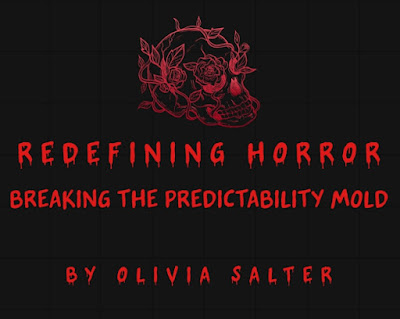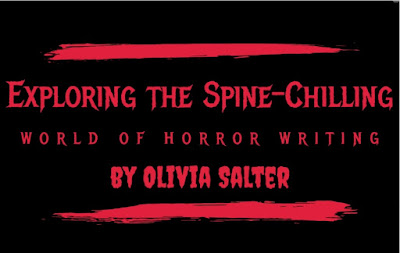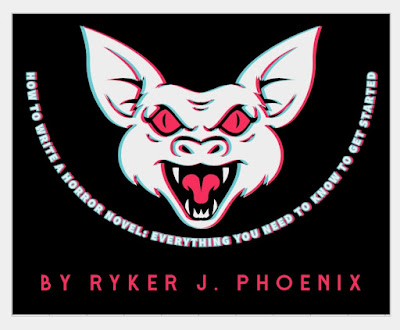Crafting a Slasher Icon: How to Create a Horror Villain as Unforgettable as Jason Voorhees, Freddy Krueger, and Ghostface
by Olivia Salter
For decades, slasher films have terrorized audiences with their nightmarish killers, spawning iconic villains like Jason Voorhees, Freddy Krueger, and Ghostface. These characters have transcended their original films to become enduring cultural symbols, each representing a unique flavor of fear. But what makes these slasher icons so unforgettable? What must one do to create a villain that stands shoulder-to-shoulder with these legends?
Crafting a slasher icon that captivates horror fans requires a deep understanding of character design, visual distinctiveness, psychological appeal, and storytelling. The following guide will delve into these aspects, offering insights on how to build a memorable slasher that could someday be as beloved as Jason, Freddy, or even newer cult favorites like Art the Clown.
1. The Power of a Distinct Backstory
Every slasher icon has a unique backstory that adds layers to their terror. Whether they were wronged, traumatized, or driven by supernatural forces, these origins humanize the villains just enough to make them both relatable and terrifying.
- Jason Voorhees from Friday the 13th is a vengeful, deformed child who drowned at Camp Crystal Lake due to neglect. His backstory immediately garners sympathy before his reign of terror begins, adding depth to his silent, brutal killings.
- Freddy Krueger from A Nightmare on Elm Street was a child murderer burned alive by vengeful parents, only to return in dreams to exact his revenge. Freddy’s background provides a chilling explanation for his supernatural abilities and the revenge-driven nature of his killings.
- Ghostface from Scream is less about one individual and more about the twisted motivations of different characters wearing the mask. This makes Ghostface dynamic and grounded in the fears of betrayal and violence from those closest to you.
When creating your own slasher villain, consider what drives them. A compelling origin doesn’t have to be overly complex, but it must give your character a motive that elevates them beyond mindless killing. Think of your villain as an anti-hero in a dark tale, with reasons for their violence rooted in deep emotions like revenge, hatred, or betrayal. Even if your slasher comes from a supernatural or otherworldly background, grounding them in real, human emotions makes them more relatable and memorable.
2. A Killer Look: Visual Design Matters
The most memorable slasher icons are immediately recognizable, often with a signature look that becomes their brand. This can be through their mask, weapon, or overall physical presence.
- Jason Voorhees’ hockey mask is one of the most recognizable visual symbols in horror. His hulking frame and silent nature combined with this mask make him an unstoppable force of terror.
- Freddy Krueger’s burned face, fedora, and glove with knives is an iconic ensemble that evokes fear. His unique look, along with his sarcastic personality, distinguishes him from other killers.
- Ghostface’s simple yet haunting mask and flowing black robe create a chilling anonymity. The simplicity of Ghostface’s costume allows it to be easily replicated, further embedding the character in pop culture.
A slasher’s appearance should reflect their personality or backstory. For example, if your villain was a victim of industrial harm, their look might incorporate elements of metal or machinery. If they come from a rural setting, their attire could be rooted in farm equipment or old-fashioned tools, adding to their eerie, otherworldly presence.
One key aspect of successful slasher design is creating a look that evokes fear while being distinctive. Experiment with masks, weapons, and costumes that are simple yet visually striking. A slasher icon needs to stand out on-screen, even in a crowd of other horror figures.
3. Signature Weapons and Killing Methods
A slasher’s weapon is as much a part of their identity as their backstory and look. The weapon should reflect the character’s personality and background, turning it into a signature element of their killing spree.
- Jason Voorhees’ machete is simple yet effective, reflecting his brute strength and relentless nature.
- Freddy Krueger’s knife-glove is both creative and personal, tied to his desire to kill within the dream world, where physical reality doesn’t matter.
- Leatherface’s chainsaw from The Texas Chainsaw Massacre is tied directly to his deranged family’s obsession with violence, meat, and machinery.
Consider how your slasher villain kills. Are they methodical and ritualistic, or do they kill in a frenzy of violence? The weapon and the way they use it should align with their personality. A character who was once a surgeon might use medical tools, while a rural backwoods killer might favor a scythe or hammer. The weapon should be as iconic as the killer, something that fans will immediately associate with the character.
4. Personality and Presence: Beyond the Mask
While some slasher icons like Jason Voorhees and Michael Myers are silent, relying on their physical presence to evoke fear, others like Freddy Krueger and Ghostface have distinct personalities that set them apart.
- Freddy Krueger’s dark humor and sadistic one-liners make him not only frightening but charismatic in a twisted way. His personality adds layers to his character, making him memorable even outside of his killing scenes.
- Ghostface relies on phone conversations and mind games to terrorize his victims before making the final strike. The unpredictability of the person behind the mask, combined with their taunting nature, elevates Ghostface as a psychological villain.
When designing your slasher, consider how much personality you want them to have. Are they a silent, looming figure like Jason, letting their physicality speak for itself? Or are they more cunning and interactive like Freddy? Even if your villain doesn’t speak, their movements, gestures, and the atmosphere they create should communicate their intentions. Sometimes, it’s the little quirks—a tilt of the head, a slow, deliberate walk—that make a character truly terrifying.
5. The Setting: Where Does Your Killer Thrive?
A memorable slasher thrives in a setting that reflects their character. Jason Voorhees is synonymous with Camp Crystal Lake, a place that becomes as much a character in the Friday the 13th series as Jason himself. Freddy Krueger haunts the dreamscape, a setting that allows for limitless possibilities in how he can torment his victims.
Creating a unique setting for your villain helps build their mythos. Is it an abandoned hospital? A small, isolated town? A sprawling forest? The environment should enhance the killer’s abilities or backstory. An effective setting is not just a backdrop—it’s part of the terror. The claustrophobic halls of a dilapidated asylum or the eerie stillness of an endless cornfield can heighten the sense of dread, making your slasher more terrifying.
6. The Killer’s Mythology: Creating a Legacy
Slasher icons endure because they become legends within their own films. Characters like Jason and Freddy have origin stories that are passed down through generations, creating an aura of inevitability around their return. The mythology surrounding the killer often involves a curse, supernatural powers, or an unresolved trauma that keeps them coming back for more.
Developing a mythology around your killer will help cement their place as an iconic villain. Why can’t they be stopped? Are they part of a curse that dooms anyone who encounters them? Does the location itself play a role in their invincibility? Building a lore around your slasher villain gives audiences more to chew on, making them wonder what will happen next—and ensuring the killer lives on in future installments.
7. Building a Fanbase: Cult Appeal and Sequel Potential
A key reason slasher icons like Jason and Freddy remain popular is their ability to inspire fan devotion. Whether through a signature style, a series of memorable kills, or a mythology that invites curiosity, the most successful slasher villains develop a cult following.
Don’t be afraid to lean into your character’s uniqueness. Cult horror fans are often drawn to the unexpected or quirky aspects of a villain. Characters like Art the Clown from Terrifier have achieved cult status by offering a fresh, disturbing twist on the killer clown archetype. Madman Marz, though lesser known, has also built a devoted fanbase thanks to his eerie presence and memorable kills.
Craft your slasher with the potential for sequels in mind. Whether through cliffhangers, unexplored elements of their backstory, or unanswered questions about their powers, leaving room for more helps build anticipation for future films. A slasher villain that evolves over time—without losing the core of what makes them terrifying—keeps fans coming back for more.
Conclusion: Creating a New Slasher Legend
To create a slasher icon that rivals the likes of Jason Voorhees, Freddy Krueger, and Ghostface, you need more than just a mask and a weapon. It takes a well-crafted backstory, a distinctive look, a signature method of killing, and a personality that resonates with audiences. Combine this with a setting that enhances the character’s terror and a mythology that ensures their lasting power, and you’ll be on your way to creating the next unforgettable horror villain.
In the world of horror, the potential for new legends is limitless. The key is to give your character depth, style, and a legacy that keeps fans haunted long after the credits roll.










